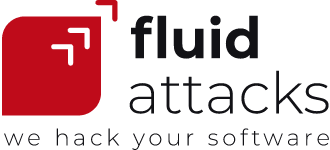| 4 min read
How likely is your organization to suffer a hack or a data breach in the next 12 months? How confident are you in containing all attacks on your organization? Your answers to these questions are probably associated with how cybersecurity operations are performed at your company. Psychological research has shown how complex 'judgment formation' is. Mainly, beliefs about future events one can experience and perceptions about how skilled one is depend on many factors; I will not delve into those details. Instead, I will focus on two strong tendencies on those judgments: first, a bias for optimism, and second, overconfidence. I will discuss what the implications of these two concepts for cybersecurity operations are.
Optimism bias and overconfidence
Optimism bias is the tendency to overestimate the likelihood of positive events in our lives and, conversely, to underestimate the probability of adverse events. Perhaps the most common instance of this bias in a business domain is what we see in project management. We usually underestimate how long a project will take to complete; likewise, we tend to underestimate the resources required. In another realm, newlyweds say almost always that their divorce is nearly impossible. Yet, the proportion of divorces across the world is around 50%. Optimism bias is not a failure of our brain or our physiology. Quite the opposite: it has been hypothesized that this skewed judgment has evolutionary roots; that is, it played a fundamental role in our survival as species. The problem is that, nowadays, this deviation might play against us. You can read more in a very insightful article Tali Sharot wrote a few years ago (Sharot, 2011).
On the other hand, we have overconfidence, a related and probably more pernicious tendency. If you work in cybersecurity, ask yourself: would you rate your cybersecurity skills better than average? Furthermore, if you’re a manager, do you think your management skills are above the average manager? One of the most famous studies in overconfidence measured how a group of car drivers rated their driving skills and driving safety (Svenson, 1981). The author found that at least 69% of participants ranked themselves better than the median driver; at least 77% rated themselves as safer than the median driver. Of course, this is statistical nonsense. The American Automobile Association (AAA) ran a study in 2017 which included a driving confidence measure; here's an excerpt:
…U.S. drivers report high confidence in their own driving abilities. Despite the fact that more than 90 percent of crashes are the result of human error, three-quarters (73 percent) of U.S. drivers consider themselves better-than-average drivers. Men, in particular, are confident in their driving skills with 8 in 10 considering their driving skills better than average.
Are you a better driver than the average driver? I bet you won’t answer "yes" so quickly after reading the previous lines. In other contexts, this has been studied too. Some research pieces have suggested "overconfidence as an explanation for wars, strikes, litigation, entrepreneurial failures, and stock market bubbles" (see Moore & Healy, 2008).

Photo by Ben Williams on Unsplash.
And the implications for cybersecurity?
In cybersecurity, these two traits can lead to undesired behaviors. "We won’t get hacked… that won’t happen here" might be an important vulnerability a company should look to fix. One person or company should never be so sure about the reach of cyber threats. Stopping thinking about additional ways a threat could be materialized is not a good strategy, given the surprising ways cybercriminals manage to cause trouble. On the other hand, thinking that your internal cybersecurity team is always capable of repelling any attack is dangerous. Ask yourself, what’s your point of reference? To whom you compare your skills and processes?
-
444,259 ransomware attacks took place worldwide in 2018.
-
More than 6,000 online criminal marketplaces sell ransomware products and services.
-
90% of CIOs admit to wasting millions on inadequate cybersecurity.
-
65% of the top 100 banks in the US failed web security testing.
-
Data breaches are identified in 191 days on average.
-
There were more than 53,000 cybersecurity incidents in 2018.
If people tend to exhibit a bias towards optimism, and if people think they have better skills than others on average, it is not difficult to start wondering whether our stands on cybersecurity might be a bit flawed. Is it possible that my company is more exposed than previously thought? Should I revisit the confidence in what I can really do now to protect my company? Those are healthy reflections we all should make if we are responsible for cybersecurity at any level. Why? Integrating information to know our level of risk exposure and our skills is difficult. We have limited information about cybersecurity risks, and we tend to accept data from known actors (e.g., competitors). But what about more distant threats that maybe we don’t know about, or that we think we know about but perhaps it’s just wishful thinking?
One of the sources of optimism bias lies in another psychological phenomenon: the availability heuristic. Think about the last time you knew about a data breach within your organization. If it is hard to come up with an example in your mind, chances are you would think it is not very likely that your company would suffer such an event in the future. Here, your past experiences and knowledge are, in part, responsible for the bias.
Now, think about how confident your team is about detecting all vulnerabilities in your applications and infrastructure. It might be true that you have never been hacked… or that you haven’t been aware of it. Many companies report no breach even if known vulnerabilities are found long after being injected. Another thing to consider is: how many violations have been successful in other organizations without being revealed to the public? That’s an instance of an interesting problem: knowing what you don’t know. Again, a healthy skepticism helps here.
What can you do?
You can adopt a healthy skepticism and let outsiders perform security testing in your systems to find potential weaknesses. Also, be open: like a real scientist is open to finding his/her theory wrong after running experiments. Implement a process by which you can continuously know whether your systems are vulnerable. Go further and make that process automatically break the build when an application doesn’t meet the defined security standards. And close that cycle triggering the fixes required, as soon as possible, to keep the business up and running. You can have all of that with Continuous Hacking and coordinating your team and stakeholders with a single platform.
We hope you have enjoyed this post, and we look forward to hearing from you. Do get in touch with us!
Share
Recommended blog posts
You might be interested in the following related posts.











